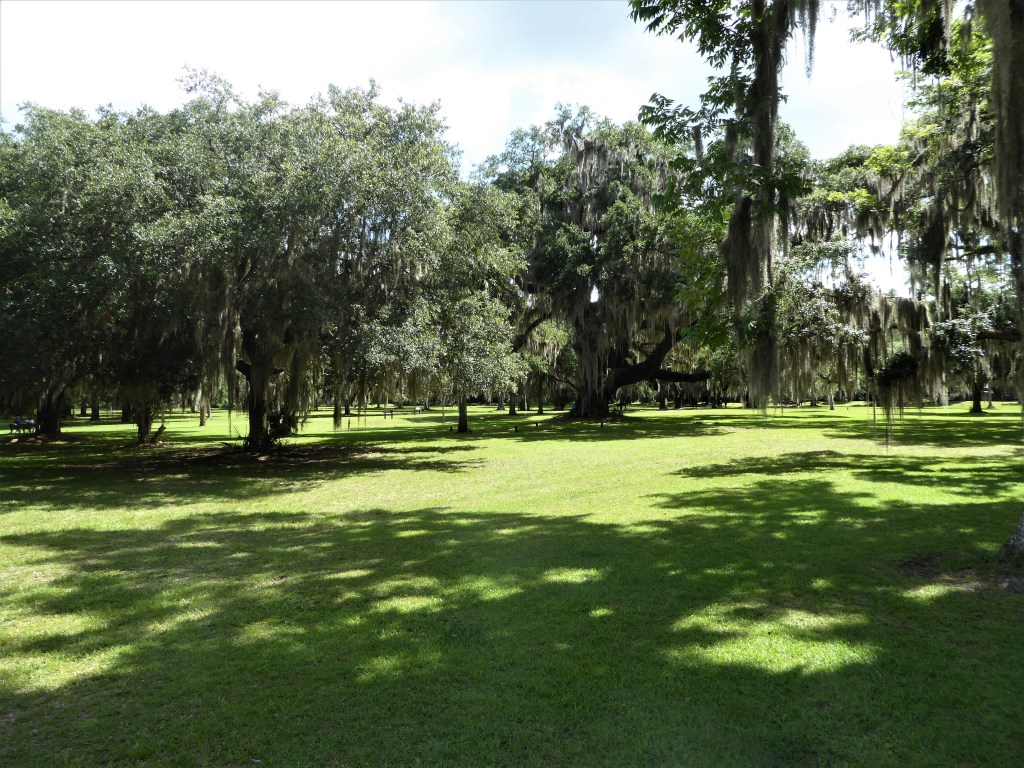Debatable Land: When a part of Georgia was British and Spanish
Published 3:00 pm Saturday, October 1, 2022

- The attractive grounds at Fort Frederica National Monument are highlighted with live oak trees.
Completing a June road trip north along the Blue Ridge Parkway, we returned home to South Georgia via the Atlantic Coast through Charleston, Savannah and Brunswick.
The trip’s final night was scheduled for St. Simons Island in order to spend time at Fort Frederica National Monument that we hadn’t set foot in for many years.
Although encountering heavy rain during an afternoon arrival on the island, the following morning served up ideal weather for our visit to a frequently overlooked, but interesting unit of the National Park Service.
Fort Frederica was a military fortification constructed by the British in 1736 as part of an effort to establish control over what was sometimes called “the debatable land,” present-day Georgia that at the time was claimed by both Britain and Spain.
The British then held sway from Charleston northward while the Spanish controlled present-day Florida from their imposing St. Augustine fort, Castillo de San Marcos.
British effort for control of the debatable land was spearheaded by James Oglethorpe, a British military officer and politician who petitioned King George II for a land grant between the Savannah and Altamaha rivers.
Receiving a charter to establish the colony of Georgia, Oglethorpe along with 114 individuals set sail in 1732 across the Atlantic. Upon arrival the group’s first order of business was to establish the settlement of Savannah.
With this underway, Oglethorpe began scouting for locations that could be fortified to offer protection for the southern boundary of Georgia.
Sixty miles south of Savannah, Oglethorpe discovered St. Simons Island with an inland passage leading to a bluff that met his requirements for a defendable townsite and fort.
Returning to Britain, Oglethorpe recruited craftsmen and families to live in the new settlement to be named Frederica in honor of the king’s son, Frederick Louis, the Prince of Wales. Oglethorpe laid out a town of 84 lots with each family entitled to a building lot plus 50 acres for growing crops.
Frederica settlers set about constructing a star fort of brick and tabby similar to that of Castillo de San Marcos, but considerably less grand. Strategically, Frederica was the most important settlement in Georgia and served as both a defensive and offensive setting for the British military.
In 1737, Oglethorpe sailed to Europe, returning the following year with nearly 600 soldiers to aid in the defense of Fort Frederica. A year later, Great Britain declared war on Spain prompting Oglethorpe to initiate an unsuccessful attack on the Spanish fort in St. Augustine.
Two years later, the Spanish returned the favor when 2,000 soldiers sailed from St. Augustine to St. Simons Island. The Spanish captured a British fort on the south end of the island but were met with British resistance as they headed north toward Fort Frederica and, after being defeated in a conflict that earned the name “Battle of Bloody Marsh” and not knowing the enemy’s strength, departed the island and returned to St. Augustine.
The encounter proved decisive in ending the Spanish claim and keeping the debatable land in British hands.
Spain and Great Britain signed a peace treaty in 1748 that eliminated the necessity for a fort on St. Simons Island. Once the garrison departed, the town commenced a gradual decline as residents sought economic opportunities elsewhere.
Most of those who remained were forced out when a 1758 fire destroyed the town. In the early 1900s, local residents felt the site was worthy of preservation. The site was authorized for inclusion as a national park unit in 1936 and became Fort Frederica National Monument.
Although little remains of either the townsite or fort, the grounds highlighted with live oak trees are quite attractive. Pulling into the parking area that offers a view toward the west where the town once stood is likely to make you think “I wish we owned a home here.”
Depressions of a moat that surrounded Frederica offer an idea of the former town’s size, while excavated tabby foundations of long-vanished buildings indicate its layout. A portion of the old barracks and a section of the fort’s brick and tabby powder magazine are visible.
Even though little physical evidence remains for today’s visitor, a feel for the settlement’s history is palpable, especially after spending time studying the visitor center exhibits and participating in a guided ranger walk.
A monument at the separate Bloody Marsh Unit where the main conflict took place is six miles south of the visitor center.
Our morning visit began in the visitor center watching an orientation film before perusing the exhibits. We then tagged along with NPS ranger Phil Officer on a guided tour of the townsite during which he brought the vanished settlement to life while discussing the history of not only the town and fort, but several one-time residents of Frederica.
Fort Frederica is open daily from 9 a.m.-5 p.m., with the exception of major holidays. Ranger-led tours are scheduled at 11:15 a.m. and 2:15 p.m., when staffing permits. Special events such as archeological digs, festivals and living history events take place throughout the year.
Contact the park for more information. Phone (912) 638-3639 Ext. 107 or visit www.nps.gov/fofr.



